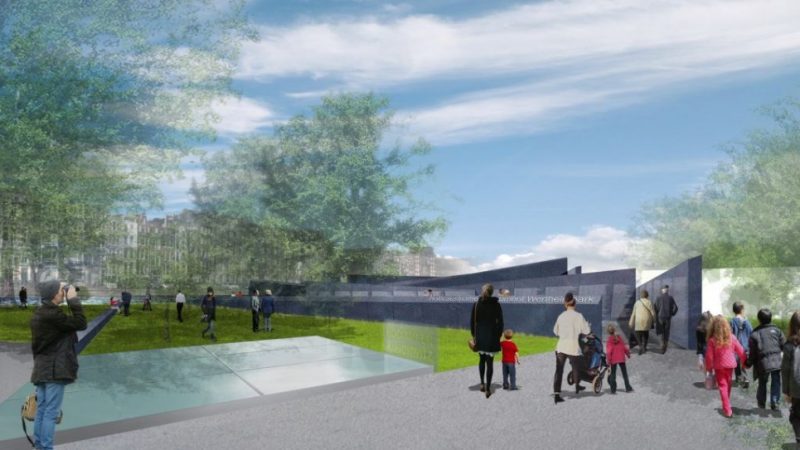After batting the location of a proposed Holocaust Memorial around for the past two years, the authorities in Amsterdam have finally put a peg in the ground, and announced where the $6.8 million memorial will be built.
The intended site for the memorial was Wertheim Park and architect Daniel Libeskind had designed it for that location. When Wertheim Park was proposed the residents living around the area objected strongly to the memorial being built there. They felt that the anticipated 200,000 tourists that would visit the memorial on an annual basis would be too disruptive to their way of life, adding to the already horrendous traffic load on the roads around the park and taking up too much real estate in the park. In addition, the park is already home to the Dutch Auschwitz Memorial; a complex monument composed of mirrors placed at ground level.
Having run into such opposition from the residents around Wertheim Park, the memorial organising committee proposed sixteen alternative sites. Naomi Koster, a member of the Dutch Auschwitz Committee, who has been punting the building of the memorial for the past nine years, was thrilled to announce that the memorial would be built on the Weesperstraat Boulevard, near the botanical gardens and the Hermitage Museum. This is a very apt location as Weesperstraat was one of the main thoroughfares through the old Jodenbuurt or Jewish neighbourhood which was where most of Amsterdam’s Jewish community lived prior to the war.
There are a few issues that remain to be resolved such as the final design which will have to be slightly altered to fit the new location and what to do with the Monument of Jewish gratitude that was erected in 1950 as a thank you to the people of Amsterdam who resisted Nazism. The limestone memorial requires restoration as its foundations are crumbling so the Jewish fathers are not against it being moved. The Amsterdam City Council will approve the final plans at their council meeting on the June 22nd and one more public consultation will be held.
Now that the final home for the memorial has been found, fund raising can go ahead, so that the construction phase is not delayed. The monument will consist of several walls that undulate up and down, upon which 102,000 names will be engraved. The walls will be fitted with low level lighting for night time illumination.
On May 20th the Mayor of Amsterdam, Eberhard van der Laan, promised that work would commence on the memorial within the coming twelve months. He told an interview with NRC, a Dutch newspaper, “I do not expect any obstacles. We overlooked in Wertheim Park that the monument radically changed the atmosphere of the park. That is not the case here. I think the neighborhood will say ‘welcome’.”
The Jewish Historical Museum, which currently consists of two main structures – a former teacher training college, now renovated as the National Holocaust Museum and the Yiddish theatre, the Hollandsche Schouwburg – will host an exhibition by Jeroen Krabbe called “The Demise of Abraham Reiss.” This exhibition is representative of the Shoah experiences of Krabbe’s grandfather.
A statement issued by the museum – a building made up of two separate halves – presents an evocative message:
“The two [buildings] together represent the story of the Holocaust. The National Holocaust Memorial is a place of deportation, collaboration and remembrance of the dead [and] the college is a place where authentic human courage and selflessness were reflected.”
This yad vashem (memorial and name) will pay tribute to the hundreds of Jewish men, woman and children herded into rail cars and deported to almost certain death at Auschwitz, Birkenau, and Sobibor. These memorials will help to keep the memory of the genocide perpetrated against the Jewish people alive in the minds of current and future generations of Dutch children.
